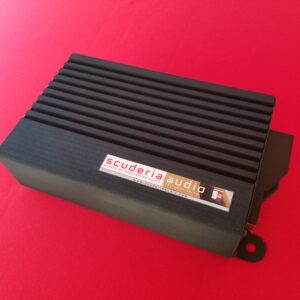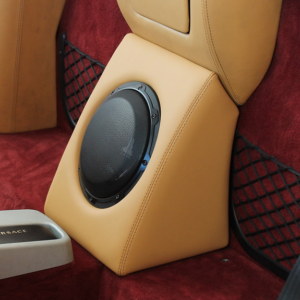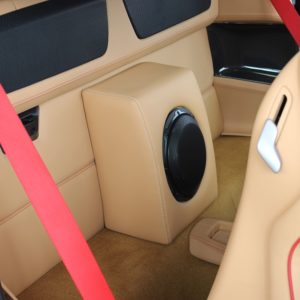A car audio system of this magnitude takes a lot of planning and a lot of work if it is to be done correctly. Fortunately, designing and creating high end car audio systems is something I have loved doing since the 1980's.
Since I own a business that deals with high end car audio systems exclusively for Ferrari, it was only fitting that my Ferrari had a high end system worthy of the owner of Scuderia Audio.
Since the goal of this project was to create a car audio system for demonstration purposes, the first step was to figure out just how many speakers could fit inside the car. A few measurements indicated that I could stuff ten 8" subwoofers behind the seats. Using the same technology as I use to construct the subwoofer enclosures for my customers, I created an enclosure using the layering system. The main difference is that instead of using 13 inner plates and 2 end plates, I used 60 inner plates and 6 end plates to create one enclosure that contains five individual compartments, each housing two 8" subwoofers. The OEM subwoofer enclosure (and the Scuderia Audio enclosures) are bolted to the center of the engine access panel by means of either two rivnuts or one of our stainless mounting brackets in the same location. What I did was remove four bolts from each corner of the engine access panel, cut four one inch diameter holes in the back of the 10 sub enclosure, then secure the box to the firewall using four stainless threaded rods. This created a 4 point, super secure enclosure.
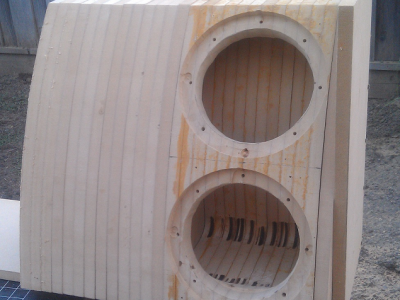
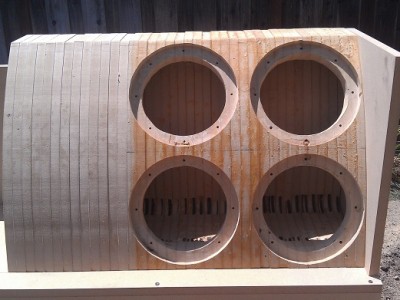
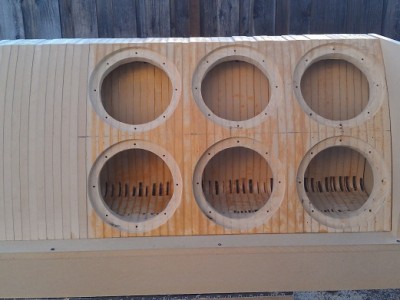
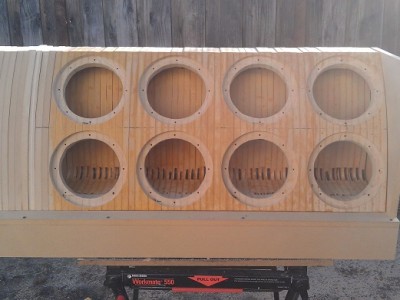
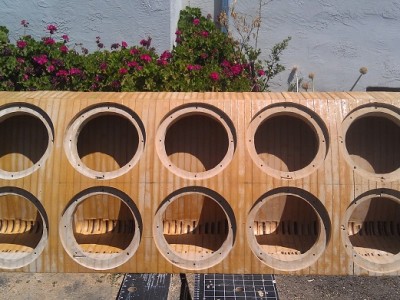
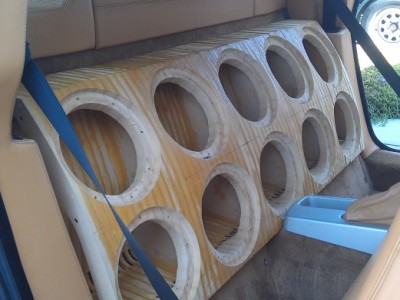
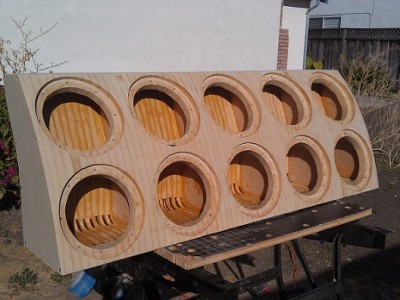
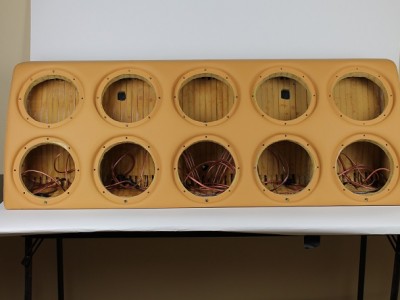
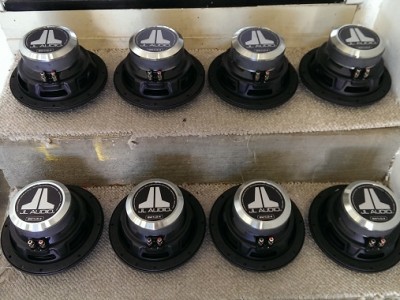
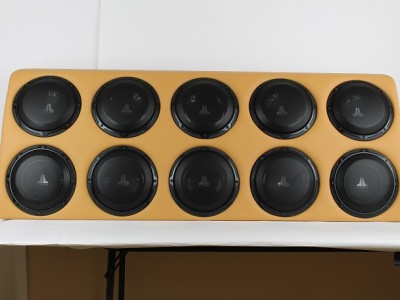
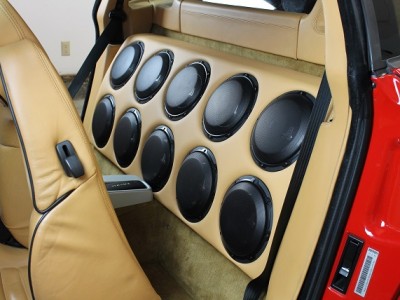
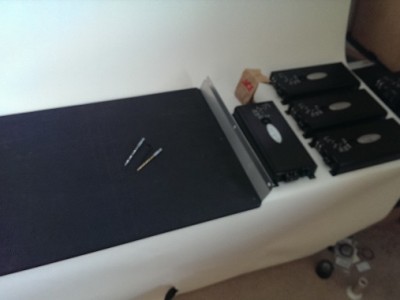
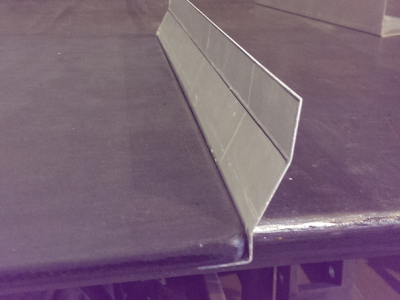
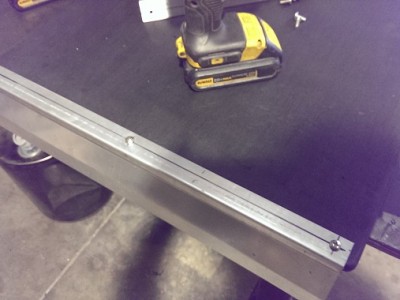
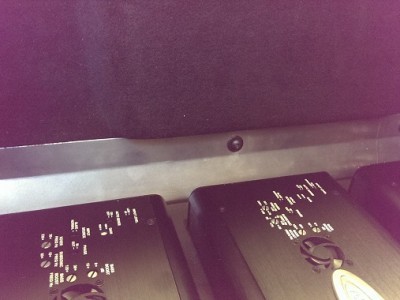
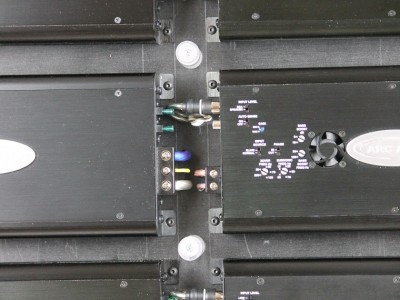
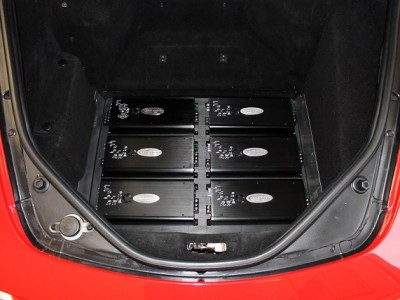
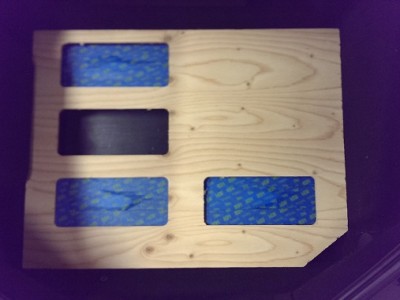
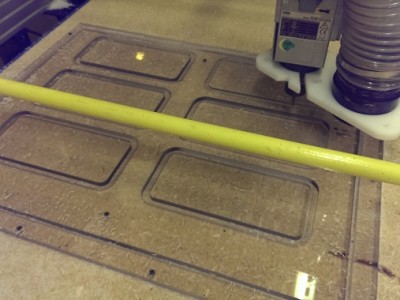
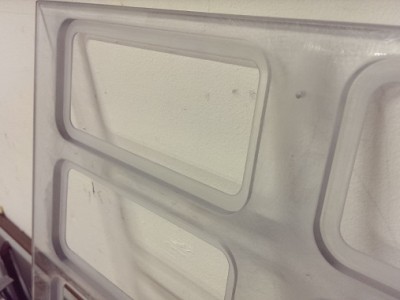
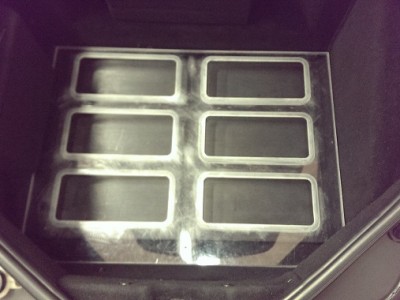
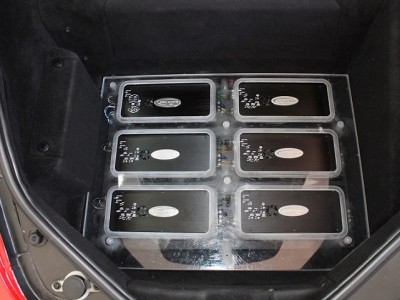
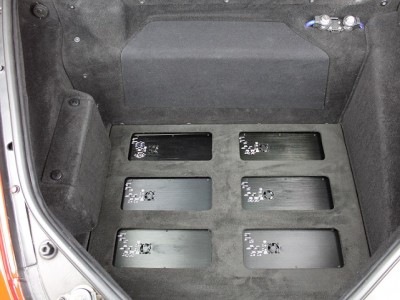
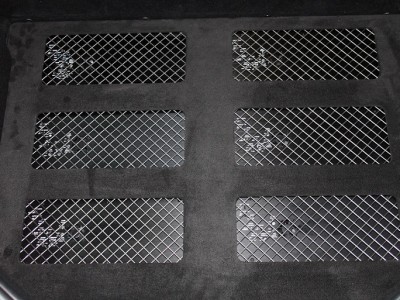
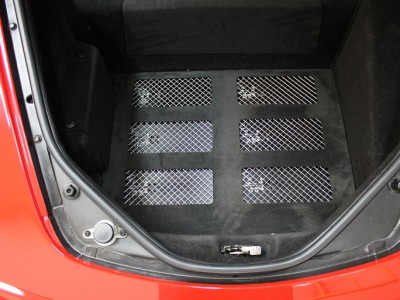
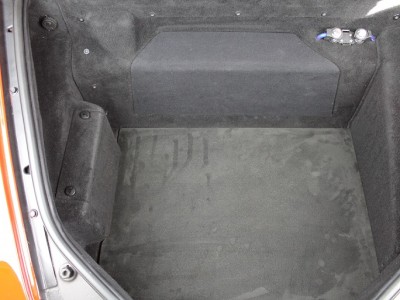
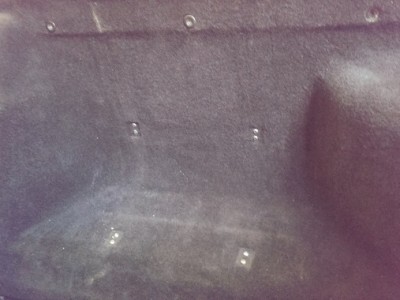
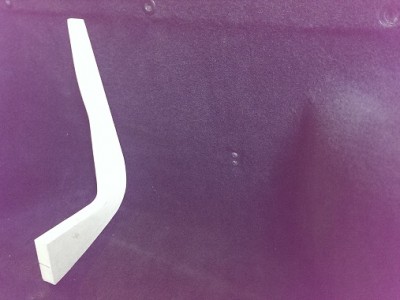
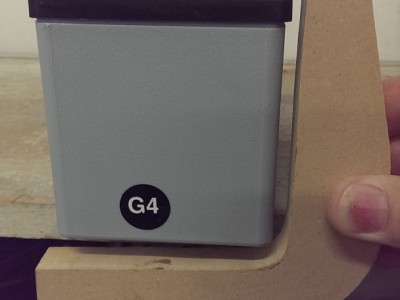
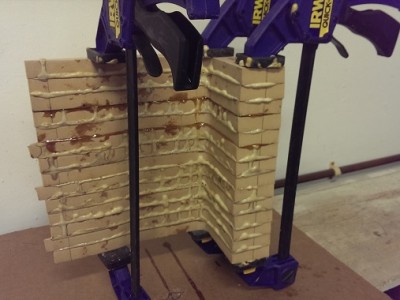
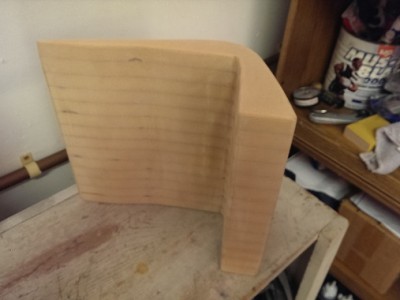
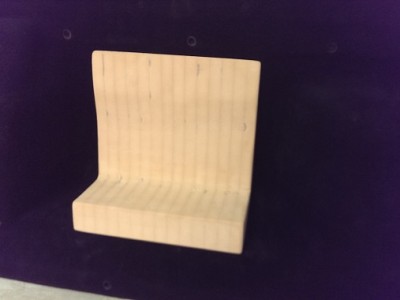
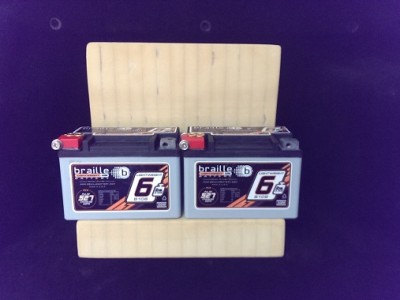
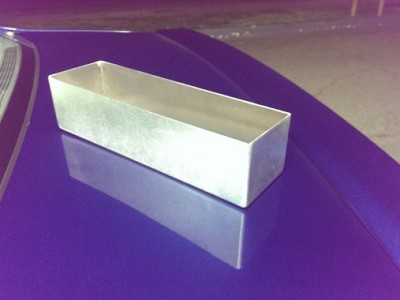
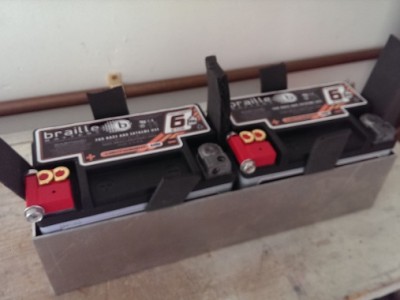
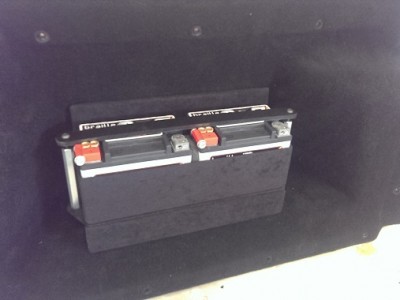
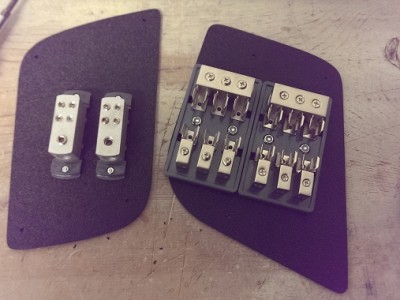
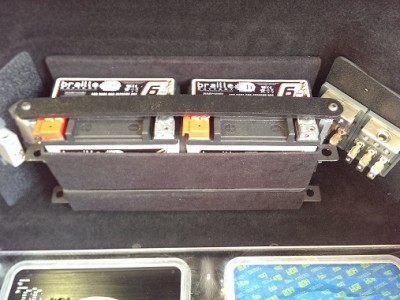
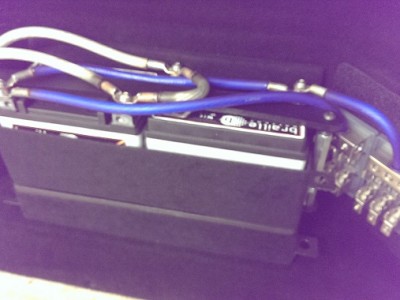
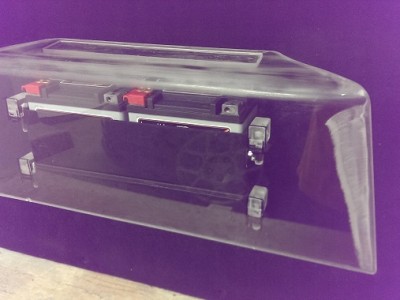
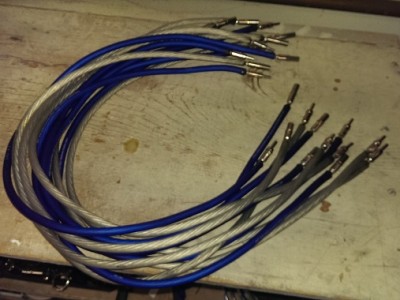
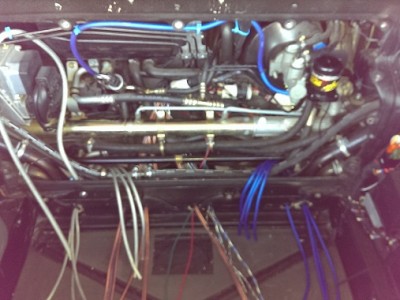
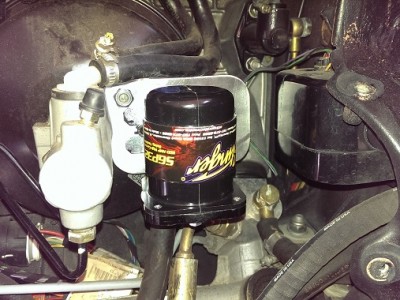
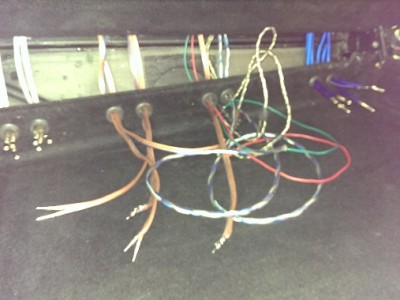
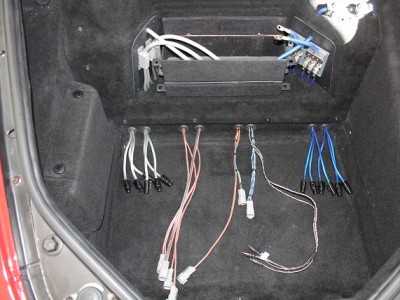
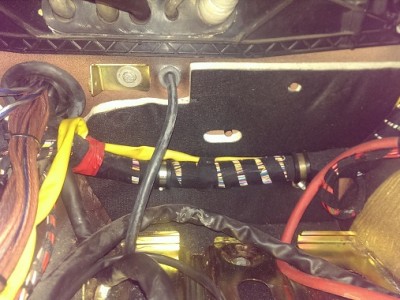
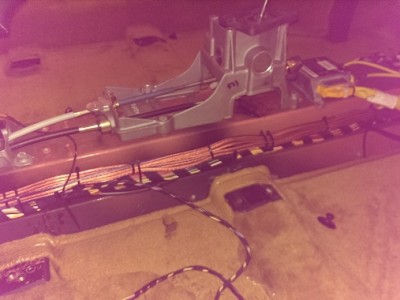
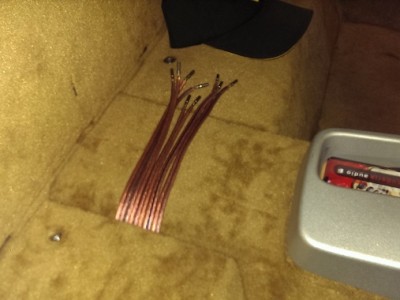
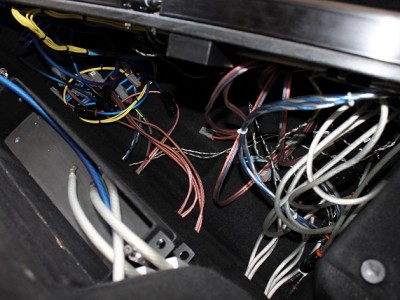
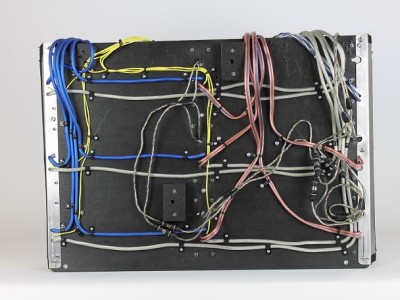
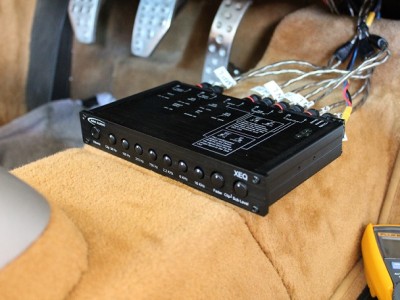
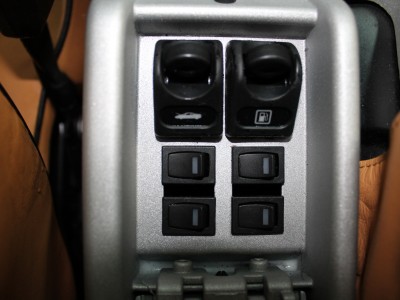
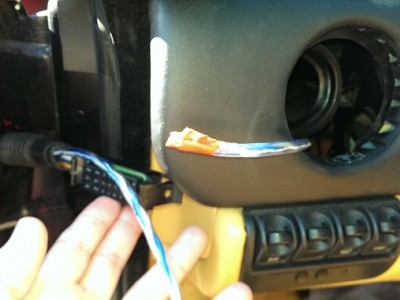
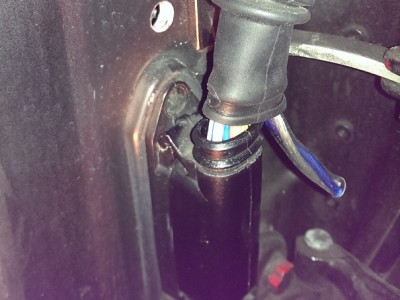
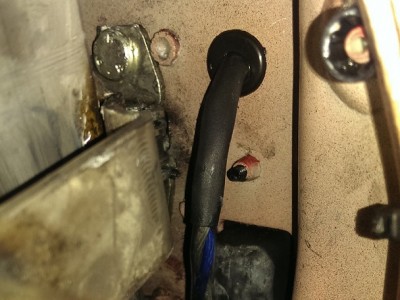
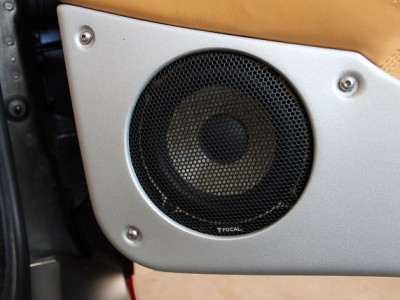
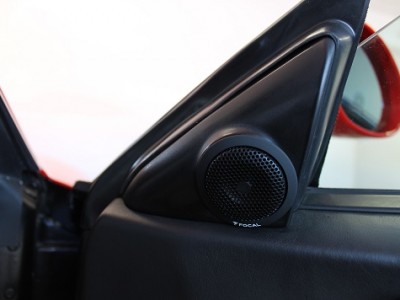
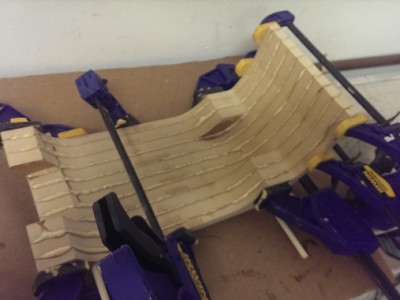
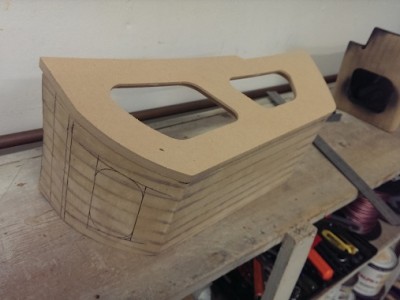
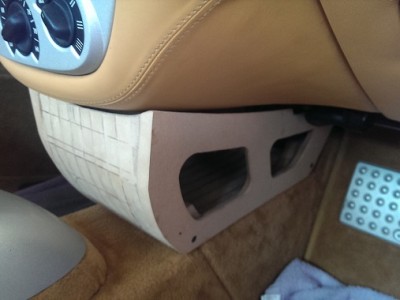
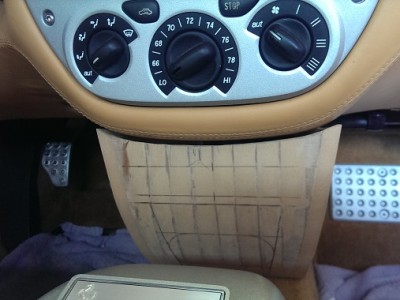
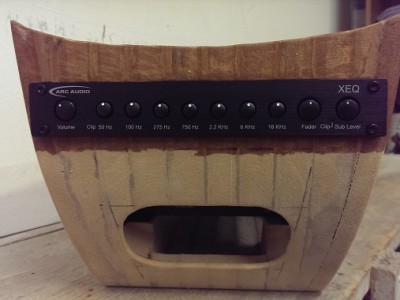
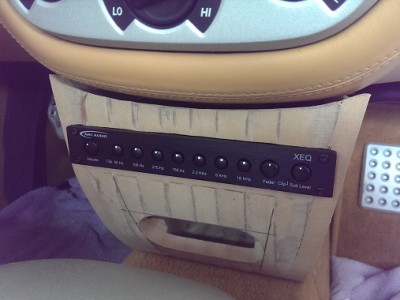
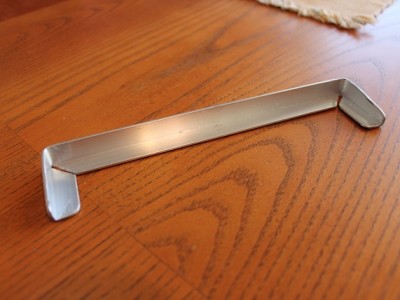
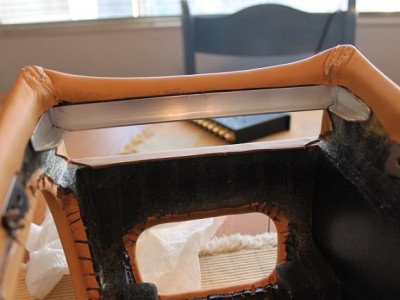
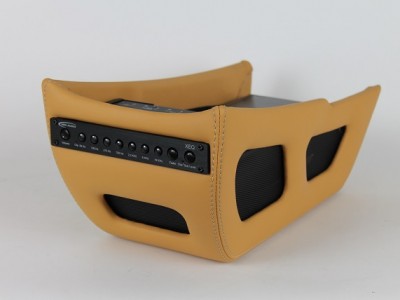
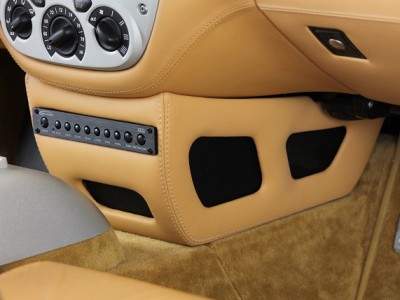
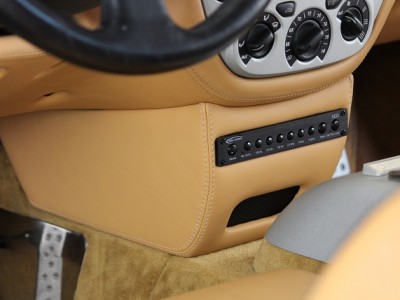
Tuning a system this size is a real challenge. Constant adjustments needed to be made. We had three, two hour sessions just to get the system dialed into a nominal setting. With both large and small systems, it's always a good idea to tune the midrange and tweeters with the bass off or disconnected. If your high end sound stage doesn't sound good without any bass, then adding bass isn't going to magically make it sound any better. The bass will make the sound more full, but resist the temptation to just hook everything up, then crank it. The difficulty arises when the listener's tastes are eclectic. You may find the settings for heavy metal are not optimal for jazz or classical. Since I am a big contemporary jazz fan, this system has a slight lean toward those tones. However, I know which frequencies to adjust on the equalizer to be able to produce a dazzling demonstration of heavy metal music with all 3000 Watts and all 14 speakers firing. It really is hard to describe. The entire car shakes and the sound car be heard from far off. When giving demos, I always wear ear plugs with head phones over those for extra protection. It's always a blast to demo the car for people who have never heard a sound system like this. Lots of fun!!



